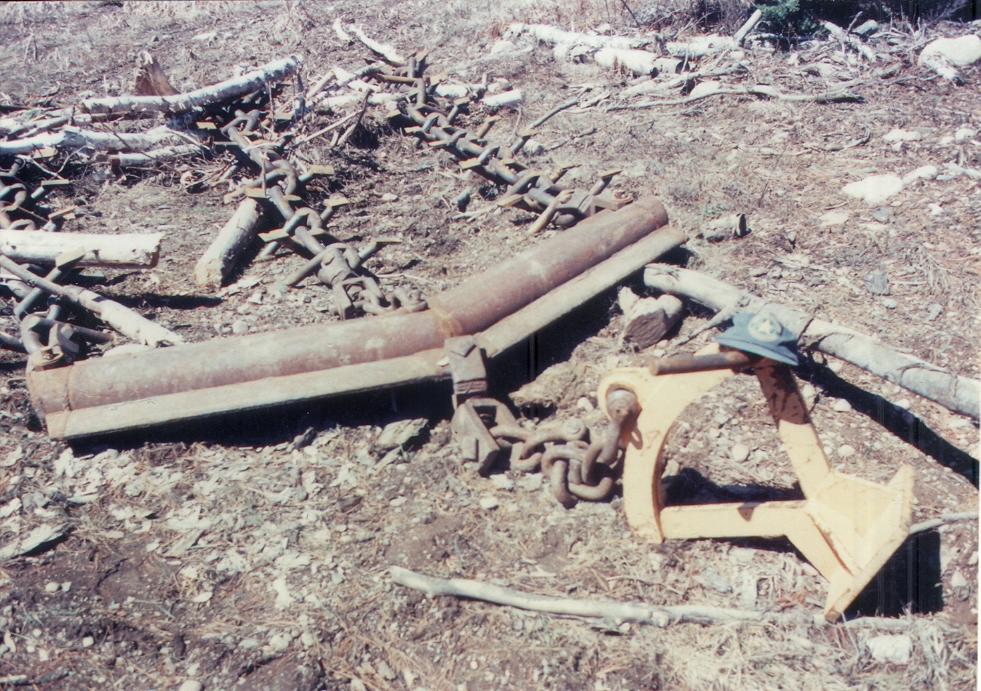Silviculture Objective(s)
Regenerate and expand the pine component on the site.
- Summer harvest to promote soil disturbance and reduce sprouting of competition.
- Enhance soil disturbance by use of anchor chain scarifier.
- Reduce broadleaf competition with herbicide treatment.
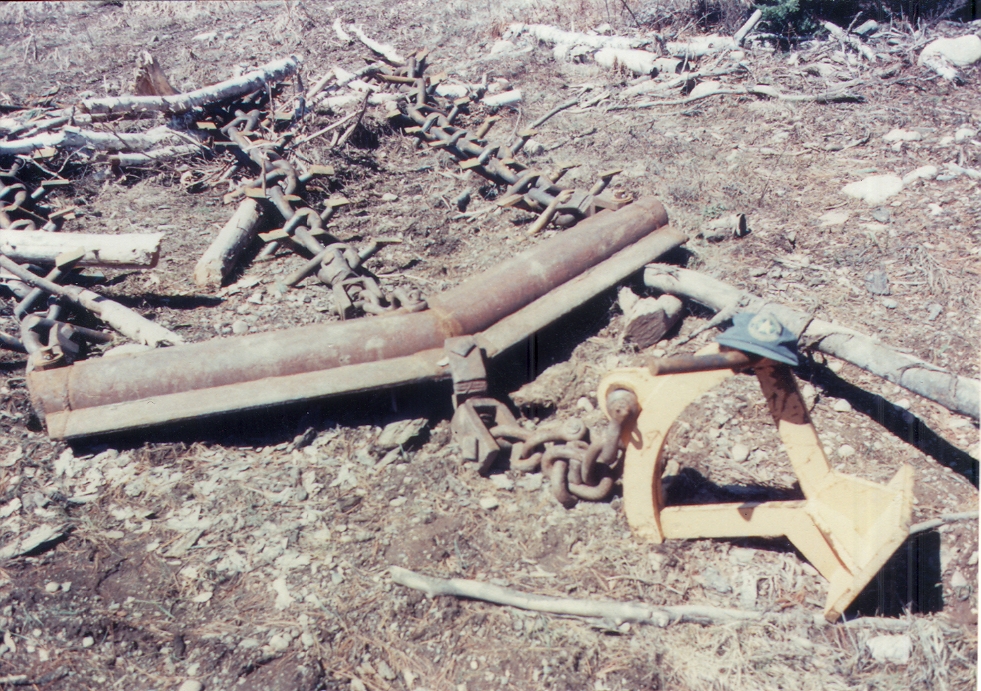
Figure 1: Anchor chain
Pre-treatment stand description and condition
Stand establishment and management history:
The site was first logged around 1905-10. The area was saved from a fire in 1936 by the CCC fire crew. The adjacent area that burned was significantly changed by that fire during a hot, dry year. There are still portions of the fire line that can be observed in the area.
Harvest of the second growth started in 1995 and was whole-tree skidded. That year was a wet summer season providing good soil disturbance. Aspen, birch, red maple, balsam fir, and spruce were removed.
In the summer of 1996 the site was mechanically treated with an anchor chain scarifier to prepare the seedbed. We rented equipment to do the scarification in-house, for timely completion.
In 1997 we did a salvage/sanitation harvest on the residual standing pine removing white pine with obvious blister rust and red pine.
Of the original harvest area, approximately 140 acres developed a red pine stocking of 1500-8000 seedlings per acre. There was a competing over story of aspen, hazel and birch that was treated chemically in 2000 for release. During the release some of the highest stocked areas were reduced by the tires on the equipment, however those areas still, for much of the area, remained overstocked.
A portion of the site on the west end (21ac) was determined to have too few seed trees to rely on natural seeding, and was planted in spring of 1997. This area was then hand released in 2009.
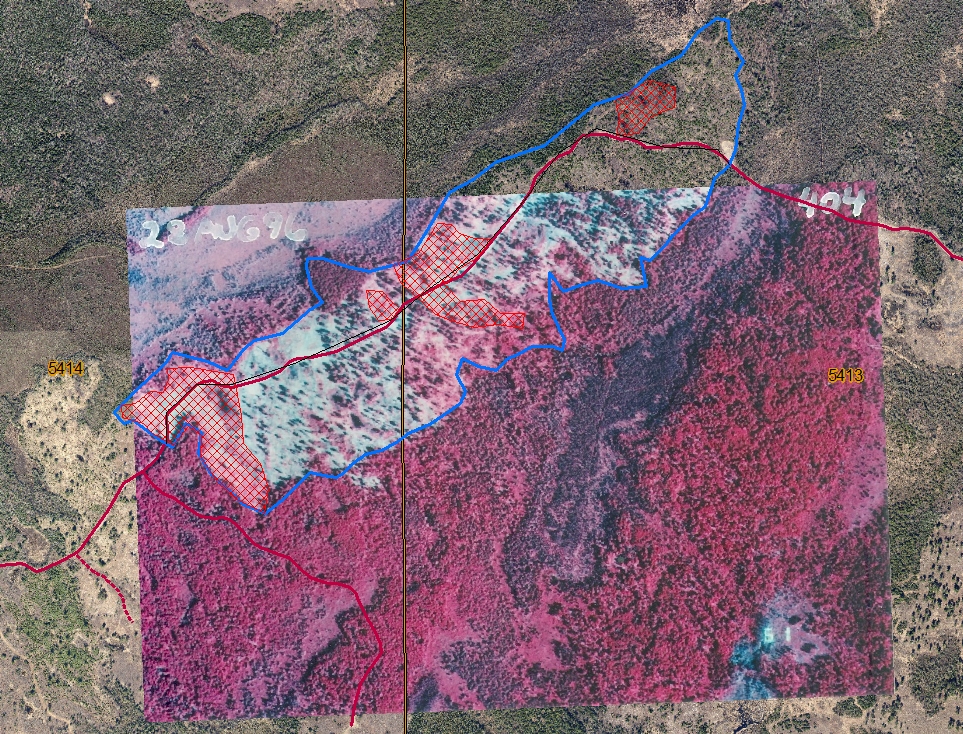
Figure 2: Post-harvest 1996
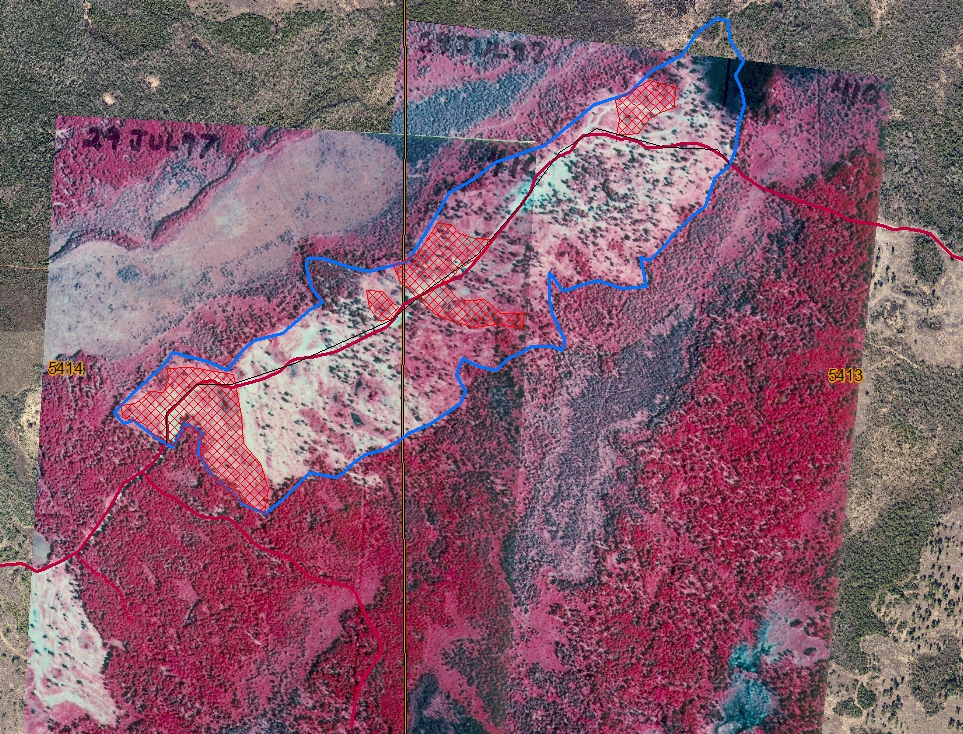
Figure 3: Post-harvest 1997
Silviculture Prescription
Harvest timber and reserve pine, scarify to disturb site for soil exposure for seedbed, monitor and release pine when established.
What actually happened during the treatment
Treatment was implemented as prescribed. The final removal went well and was done with a cut-to-length system. This final removal of all existing large pine overstory was accomplished during summer of 2008.That would be the preferred method for similar harvests. This did minimal damage to the pine regeneration; however it could have been done 4-5 years earlier.
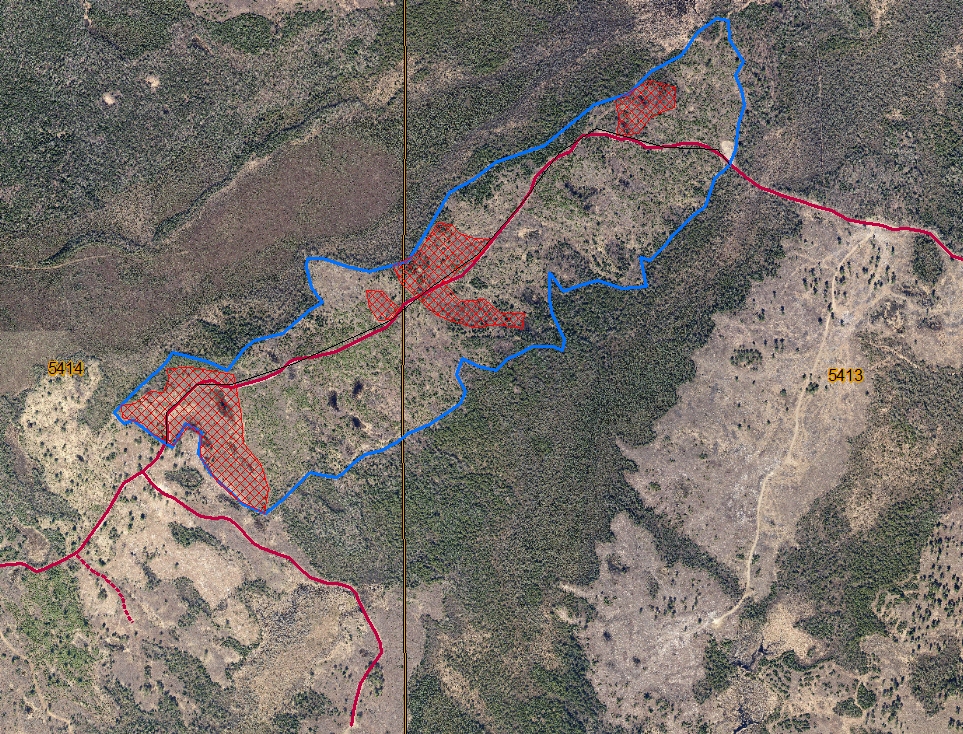
Figure 4: Stockade site 2013
Plans for future treatments
Portions of the site may need a pre-commercial thinning treatment. Site can be a productive pine resource with multiple entries over the next rotation.
As the site develops, it may be prudent to incorporate future harvest and fire hazard reduction measures. These could be hardened access roads and landings, firebreaks, pruning to remove “fire ladder”, suppression of a balsam fir understory by burning or mechanical means.
Costs and economic considerations
Anchor chain treatment was $25-35/acre
Normal planting and herbicide costs
Other notes
Projected impacts of climate change leading to some warming and drier conditions will like have only minor negative impacts. There may by increased growth with longer growing seasons and slight rise in CO2, as some studies suggest.

Figure 5: Stockade geocode - scan for more info
Summary / lessons learned / additional thoughts
Opinion- Shelterwood treatments are not common as a means to regenerate pine, they can be done, but they require patience and all the environmental pieces being present. It takes recognition of the possibility of failure when all the site elements are not there for natural seeding to be successful. This site took 12-13 years for the final outcome and would have otherwise been the “clearcut-site prep- plant- release- bud cap- method”. It appears that because of natural seeding, the need to bud cap for seedling protection was less of an issue. The key to success is competition control.
